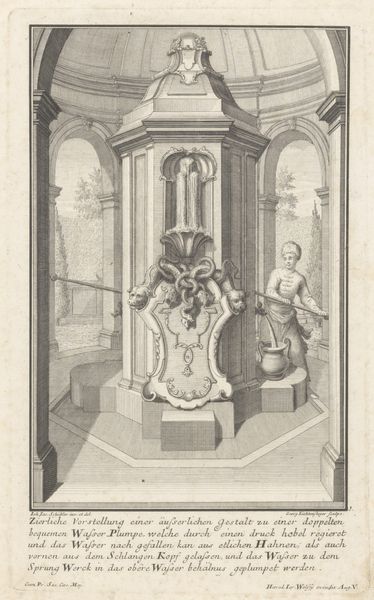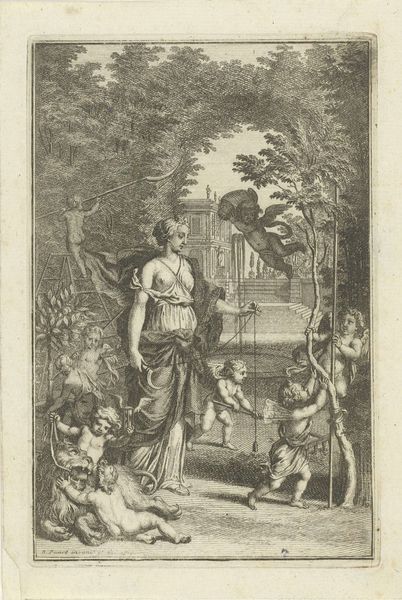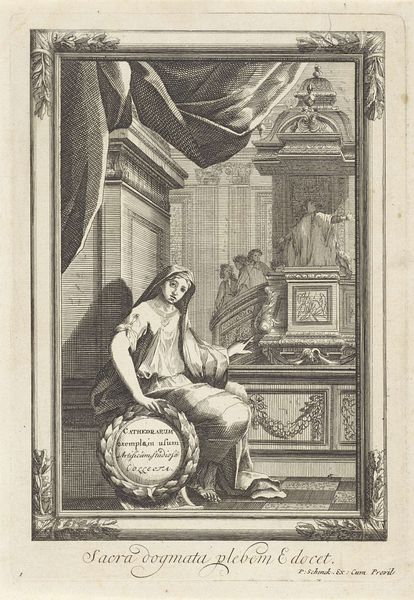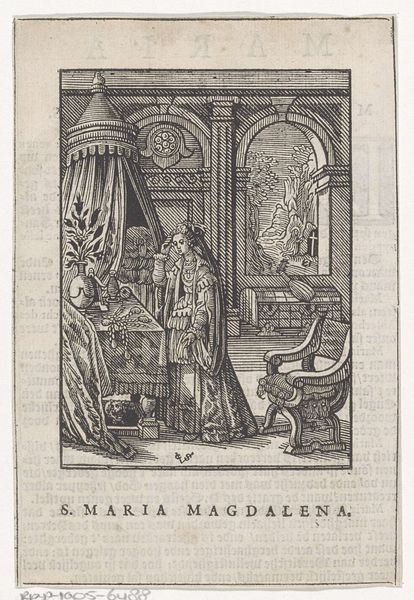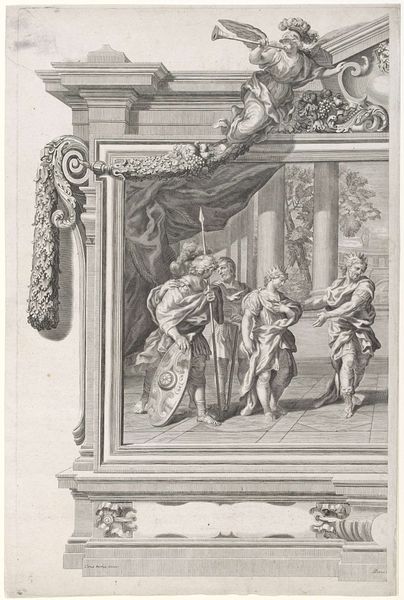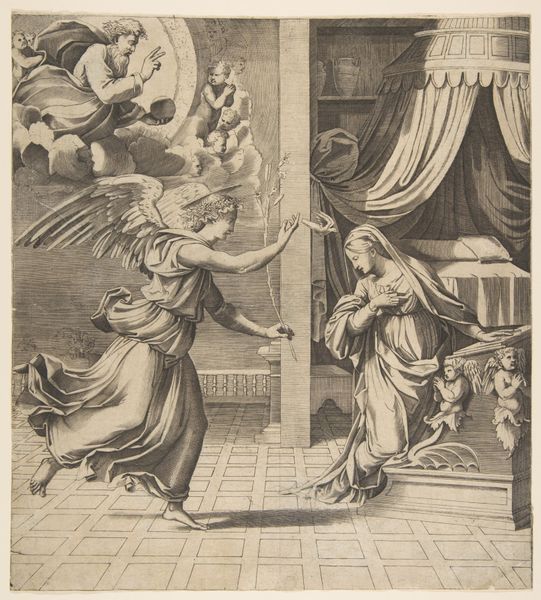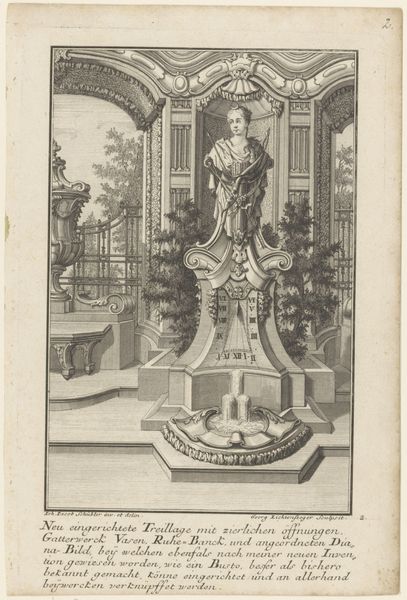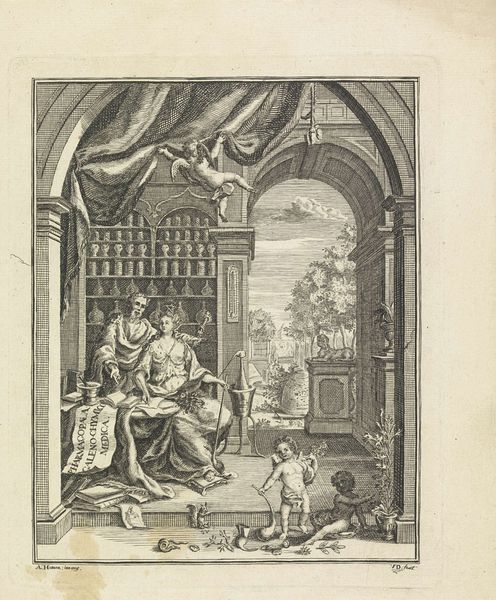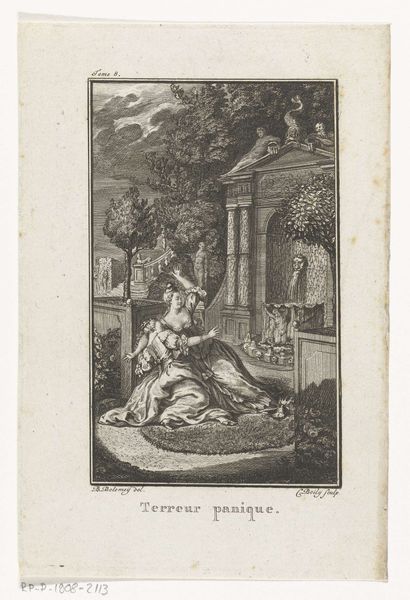
print, sculpture, engraving
#
baroque
# print
#
old engraving style
#
landscape
#
sculpture
#
engraving
Dimensions: height 289 mm, width 183 mm
Copyright: Rijks Museum: Open Domain
Editor: This is "Fountain with a bust of Jupiter" by Georg Lichtensteger, dating from after 1724. It’s an engraving. I'm immediately struck by its formality, like stepping into a perfectly ordered dream. What do you see in it? Curator: It does have that almost hyper-real quality, doesn't it? For me, engravings like this are whispers from another era, reflecting a very specific desire for control and idealized nature. Look at how the lines define every leaf and ripple – it's a world built on reason and the "correct" way to perceive beauty. Think of gardens then as theaters, places to display power, intellect, even moral virtue. Does the Jupiter fountain look natural, or constructed? Editor: Definitely constructed. Everything seems placed just so, geometric almost. Was that typical of Baroque landscapes? Curator: Absolutely. The Baroque garden wasn't a wilderness; it was about imposing order onto nature. Symmetry, carefully planned perspectives, and the use of classical imagery, like Jupiter, were all meant to evoke a sense of grandeur and the triumph of human intellect. And see how the fountain itself becomes an allegorical statement, the water almost pouring forth from Jupiter’s power? Do you think the artist saw the engraving just as a commercial print? Editor: Probably not just commercial. It feels like he was trying to communicate a vision. I learned to pay attention to how control of nature became a status symbol back then, more than I realized. Curator: Precisely! And sometimes, a little art history lets you question what you consider “natural” in the first place.
Comments
No comments
Be the first to comment and join the conversation on the ultimate creative platform.




